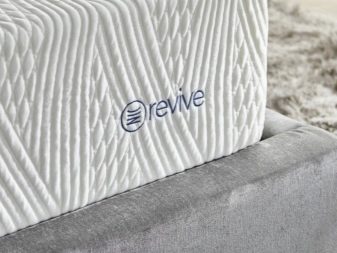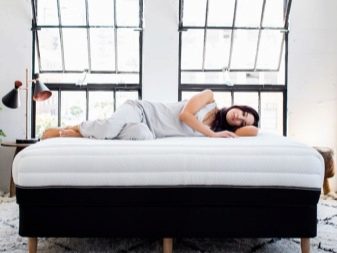Features of anatomical mattresses and the rules for their selection
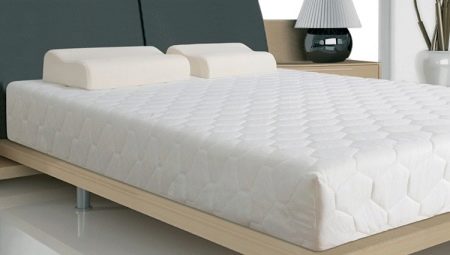
The choice of a mattress must be approached more responsibly than the choice of the bed itself. After all, a sound and healthy sleep depends on it. A well-rested person will wake up cheerful and not irritable. Everyone has heard about the benefits of anatomical mattresses, but not everyone knows what it is and how they differ from orthopedic options. We will talk about this in the article.
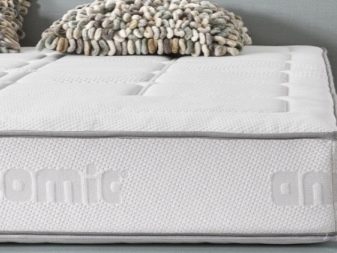

What it is?
The name of the mattress speaks for itself - it is able to repeat the anatomical shape of the human body, even if the sleeping person changes position many times during the night. Such a mattress will please people of any physiology, it will helpfully adapt to each individual and provide a comfortable sleep. The task of an anatomical product is not to bend under the weight of a sleeping person, but to carefully support his body. This allows the spine and muscles to be naturally relaxed throughout the night and to look healthy and rested in the morning.
The effect of anatomical influence is achieved due to the point influence on the human body. A large number of independent springs, enclosed in a mattress, react to the specific pressure of any part of the body, they prevent a sleeping person from falling under his own weight.
If the mattress does not contain a spring, the point effect is carried out by combining different types of fillers.
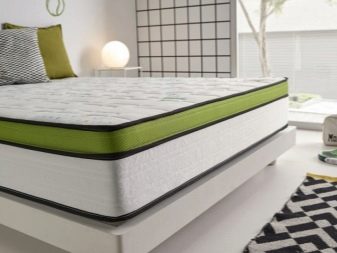
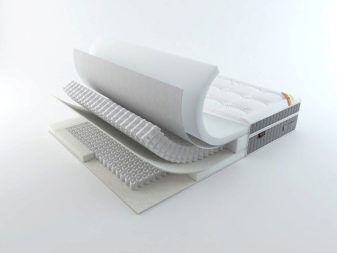
Advantages and disadvantages
Regardless of the type of filling, anatomical mattresses have general advantages:
- they are suitable for people of all ages and different physiques;
- products with artificial fillers are treated with special compounds that repel dust, helping to avoid ticks;
- when used correctly, mattresses have a long service life.
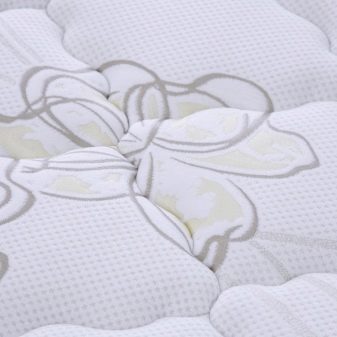
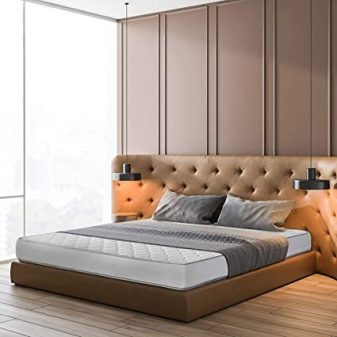
The positive effects on human health are as follows:
- the ability of the product to adapt to the human body allows you to get the most comfortable sleep;
- joints, muscles, vertebrae do not bend, but are sparingly supported;
- the body is in a natural position, which means that stagnant processes are not allowed, the blood circulates correctly;
- people suffering from osteochondrosis, pain in the shoulders, back, lower back, joints can sleep on the mattress.
The products are recommended for pregnant women, people involved in hard physical labor, athletes, those who suffer from insomnia and everyone who loves a comfortable rest. As for the cons, they refer to the high cost of production.
In addition, the habit of comfortable sleep becomes stable, and if you have to spend the night at a party or on a business trip, the tangible difference does not allow you to fully sleep.
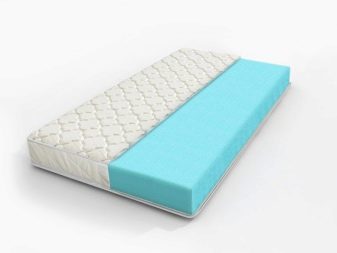

What is different from orthopedic?
All anatomical mattresses perform orthopedic functions, but a rare orthopedic product may contain anatomical effect. To understand this, one should separately consider each option, its composition and the effect on a sleeping person. The anatomical model covers the body, prevents it from falling under its own weight, as it happens with simple mattresses. The product responds to any pressure with soft support, which belongs to orthopedic properties. In most cases, this type of mattress has a medium firmness. It is versatile and can suit everyone.
In orthopedic options, body support is pronounced. Due to the increased rigidity, the product almost does not bend, keeping the spine level. The mattress does not respond to body curves, is not responsible for complete relaxation, does not provide pleasant muscle relaxation and comfort. It is purchased for medical reasons by people with a sick spine, joints and other orthopedic disorders.
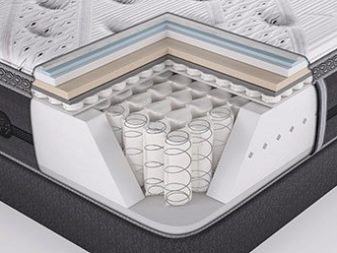
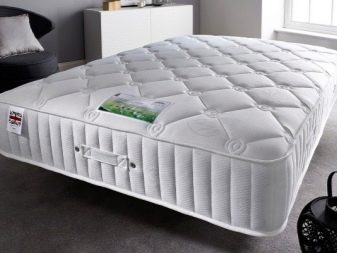
It is believed that such products are useful for young people in whom the spine is growing and forming. Hard mattresses protect the back from stoop, scoliosis and other deformities, allowing the spine to develop correctly. Those who are going to purchase an orthopedic product should understand that not everyone will be able to fully sleep on a hard bed and feel rested.
So, let's draw conclusions.
- Orthopedic mattresses belong to hard options, anatomical ones have medium hardness. But the difference in the degree of hardness is not so categorical, in each group it varies within certain limits, making it possible to diversify products.
- Anatomical mattresses are suitable for everyone. Lovers of asceticism, people with certain diseases, adolescents resort to orthopedic for the correct formation of the spine.
The differences between both types of products are obvious, but it is impossible to say which product is better, since they solve different problems and may be needed by different categories of users.
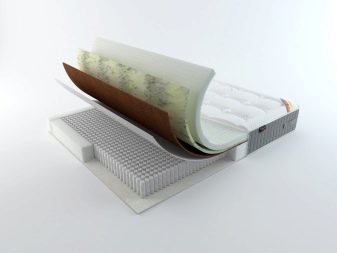
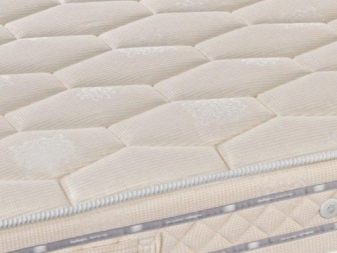
Views
All anatomical mattresses are divided into two broad categories - with and without springs. In addition, products can be divided according to the type of fillers and the degree of hardness. Despite the fact that anatomical mattresses have medium firmness, its level is far from unambiguous: one material can be hard and elastic, while the other - soft and more pliable. Consider different options for anatomical mattresses.
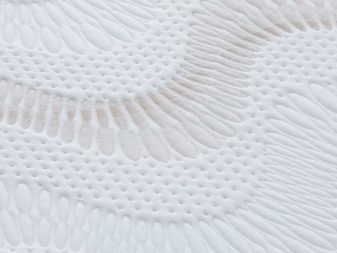

With independent springs
In ordinary mattresses, all the springs are interconnected, and if a person sits on a bed, each spring pulls a nearby one, which leads to the subsidence of the entire bed. In anatomical products, independent spring blocks are used, which are a mechanism consisting of one or more springs packed in special individual cases.When pressure occurs on the mattress, only those springs that are pressed are compressed, the blocks standing next to it do not change their position.
The pressed springs have enough elasticity to support the body, and the rest gently surround it, this is the anatomical effect of the mattress. EIf a person stands on one side of the bed, the person lying next to it will not even feel it. It should be understood that springs alone will not provide comfort. Layers of polyurethane foam, latex or other fillers are installed on them. A breathable hygroscopic cover is put on top.
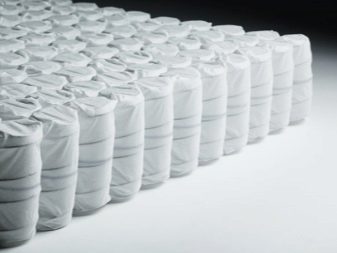
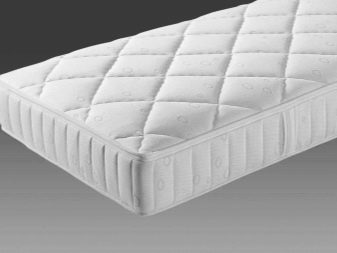
Springless
Today, entire engineering teams are developing comfortable and innovative mattress fillings with anatomical effect. A component like cotton wool is a thing of the past long ago. Natural and synthetic materials are used. You can find mattresses with monoblocks made of soy foam, memoriformes, latex. But more often they produce combined options, alternating layers of fillers and achieving the necessary elasticity.
Unlike spring blocks, mattresses with artificial fillers do not accumulate dust, mites, and do not retain pathogenic fauna. Products are durable, not prone to punching.

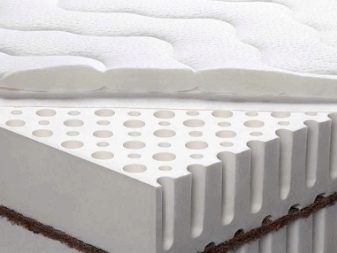
According to the degree of hardness
The average hardness characteristic of anatomical mattresses also has different levels: you can choose a model that is harder or softer, it all depends on the spring blocks or fillers. One berth can contain from 300 to 2000 spring blocks. Each spring is manufactured from high carbon steel. The cushioning of the mattress will depend on the size of the spiral coils and the number of elements located per square meter of the product.
Besides the springs, the stiffness will depend on the thickness of the cover layer and its structure. For soft mattresses, memoriform and latex are used. Such models are suitable for thin, middle-aged people. Medium hardness is achieved by combining soft (anatomical foam) and dense (coira) fillers. It is a versatile mattress of choice for people of all ages. Rigid models, in addition to reinforced springs, are covered with thermally bonded linen, sisal. The products are capable of withstanding maximum loads, they are suitable for obese people, patients with orthopedic problems and those who monitor their posture.
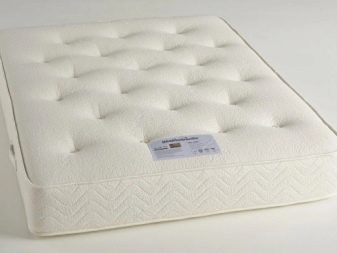
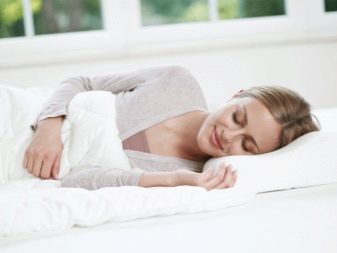
By type of fillers
The types of mattresses are also divided by the nature of the fillers. They consist of two broad categories - natural and synthetic. Natural options include coconut coir, felt, latex, wool, fluff, linen. Artificial - holofiber, polyester, technogel, polyurethane foam, memory foam. They all have varying degrees of rigidity.
For a comfortable mattress, several layers are used simultaneously, achieving maximum convenience. Natural fillers, especially down and wool, are not recommended for asthmatics and allergy sufferers. The artificial material has hypoallergenic properties, it is absolutely safe.
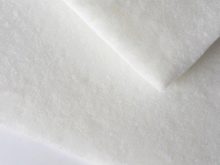
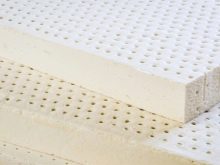
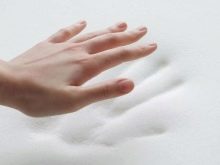
Dimensions (edit)
The dimensions of the mattress directly depend on the parameters of the purchased bed, and it, in turn, should be bought with an eye to the size of the future owner. As a result, the mattress should be 15-40 cm longer than the height of the sleeping person and twice the width of his shoulders. In addition, the width of the mattress depends on the type of bed:
- single - 80x190 or 90x200 cm;
- one and a half - 110x185, 120x190 or 140x200 cm;
- double - 160x200 or 180x200 cm.
Mattresses are usually rectangular in shape. For non-standard beds, they will have to be ordered.
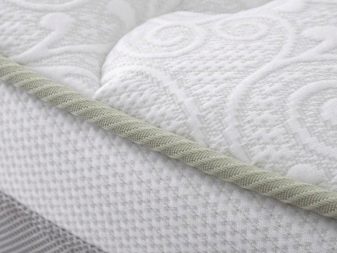
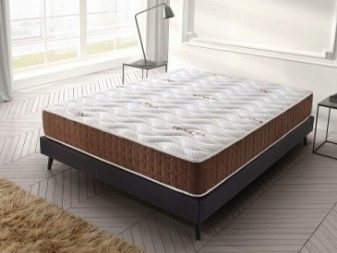
How to choose?
When choosing, first of all, their own preferences are taken into account - someone cannot fall asleep on a hard mattress, someone does not like a soft bed. With regard to general recommendations, they are as follows:
- those who are overweight are better off choosing rigid options, they can withstand a heavy load and will last longer;
- the same products are needed for people with a sick spine;
- excessive elasticity and density will be needed by adolescents for the correct formation of posture;
- the older a person is, the softer the bed he needs;
- thin people also prefer soft mattresses;
- products of medium hardness are suitable for everyone;
- people with pain syndromes and those who suffer from insomnia should also choose a model of moderate severity;
- medium hardness ideal for double beds.
To find out if a mattress is right for you, try lying on it before buying. Try to guess with the size, if it does not match in any direction, problems will begin during operation. When choosing a product for a long time, if a sound and healthy sleep is important, you should not save money - buy a mattress from a trusted manufacturer that does not cause you any doubts.
